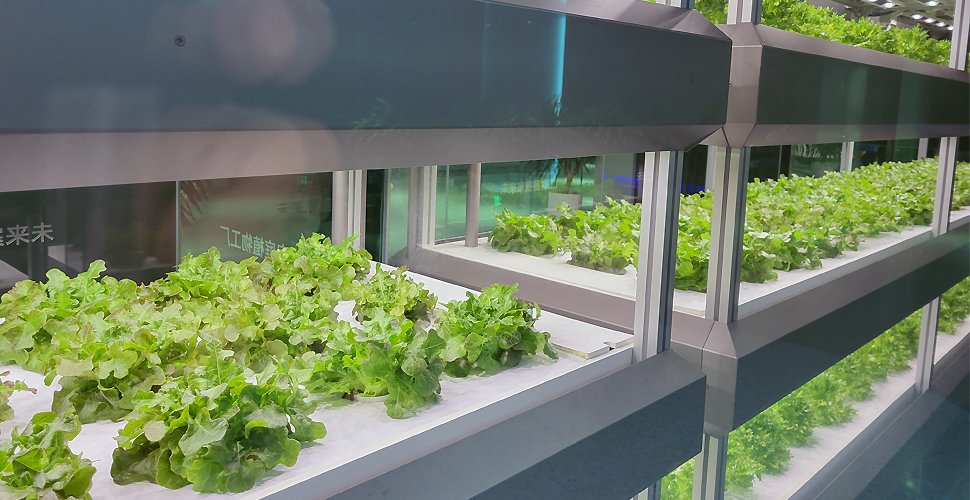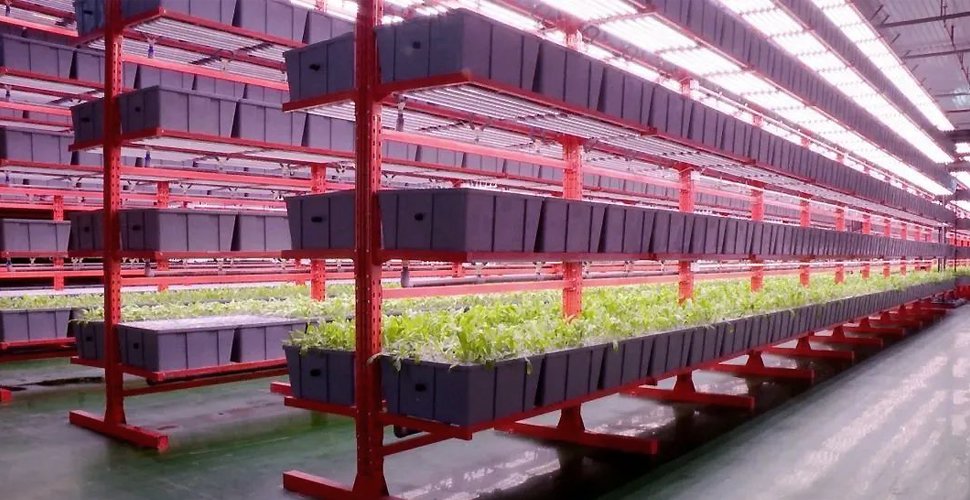Jatkuvasti kehittyvässä puutarhanhoidon maailmassa vallankumouksellinen menetelmä on juurtunut, ja se vangitsee kokeneiden puutarhureiden ja vihreiden peukaloiden mielikuvituksen.
Hydroponiikka on viljelyn taidetta kasveja ilman maaperää, ja sen ilmaantuminen on muuttanut pelin, lupaaen nopeampaa kasvua, tehokasta ravinteiden imeytymistä ja hallittavaa ympäristöä.
Jotkut viljelijät saattavat ihmetellä: Voivatko nämä ripustetut taimet todella kilpailla perinteisten maapuutarhojen runsaan sadon kanssa? Voivatko salaatinlehdet kasvaa niin suuriksi ilman Äiti Maan syleilyä?
Vastaus ei ole yksinkertainen “kyllä” tai “ei.” Tämä on tarina kahdesta puutarhasta, joilla kummallakin on vahvuutensa ja rajoituksensa.
Tämän juurivallankumouksen hyödyt ovat yhtä houkuttelevia kuin kypsät marjat.
Kasveja hydroponisessa puutarhassa tyypillisesti kasvavat nopeammin, ja sato on 20–50 % korkeampi kuin maaperässä kasvatettujen kasvien. Rapean salaatin sadonkorjuu kaksinkertaisella nopeudella ja basilikan aromin nauttiminen tulevina viikkoina ovat vain muutamia etuja.
Veden käytön tehokkuus on myös uskomaton, kulutus on yleensä 10 kertaa pienempi kuin perinteisillä menetelmillä.
Liity matkallemme ja tutustu vesiviljelyn ja maaperän puutarhanhoidon eri maailmoihin.
Numerot kertovat tarinan
Journal of Agronomyssa vuonna 2016 julkaistu meta-analyysi, jossa syntetisoitiin 72 tutkimuksen tiedot, paljasti, että hydroponiikan tuotto oli 20–50 % korkeampi kuin maanviljelyssä.
Vihreät lehtivihannekset, kuten salaatti, näyttävät olevan hydroponiikan loistavia tähtiä. Lukuisat tutkimukset, joista yksi julkaistiin Journal of Environmental Science and Pollution Research -lehdessä, osoittavat, että hydroponisesti kasvatetun salaatin sato on 20-50 % korkeampi kuin maaperässä kasvatetun salaatin.
Kuvittele rivejä rapeaa, pitkänomaista salaattia, jotka tuottavat 6 kiloa neliömetriä kohti vesiviljelyssä, kun taas maanmuokkaus tuottaa 4 kiloa neliömetriltä – se parantaa huomattavasti salaattikulhoasi!
Jopa juurekset, jotka tunnetaan maaperän mieltymyksistään, voivat saavuttaa huomattavan 25 % lisäyksen hydroponisissa järjestelmissä.
Tomaatit kertovat toisenlaisen tarinan. Tutkimukset osoittavat, että hydroponiset tomaatit lisäävät tyypillisesti pienempää satoa, yleensä noin 10-20%, verrattuna maaperässä kasvatettuihin tomaatteihin.
Tämä havainto, joka julkaistiin Journal of the American Society for Horticultural Science -lehdessä, viittaa siihen, että tomaatit eivät ehkä ole ihanteellisia ehdokkaita hydroponisen tuottopotentiaalin maksimoimiseksi.
Tuottoon vaikuttavat tekijät
Olipa kyseessä maanviljely tai vesiviljely, enimmäissadon saavuttaminen ei ole satunnaista. Jotkut avaintekijät, jotka vaikuttavat sekä vesiviljelyyn että maaperän puutarhanhoitoon, ovat:
Kasvin tyyppi: Eri viljelykasveilla on vaihtelevat optimaaliset kasvuolosuhteet ja ne reagoivat eri tavalla hydroponisiin ympäristöihin. Lehtivihannekset ja hedelmävihannekset kokevat tyypillisesti merkittävimmät hydroponisen kasvun piikit.
Ravinteiden hallinta: Ravinteiden hallinta on ensiarvoisen tärkeää. Vesiviljelyssä liuenneiden mineraalien tarkka hallinta eliminoi maaperässä esiintyvät tehottomuudet, mikä parantaa imeytymistä ja kasvua. Maaperäpuutarhat vaativat huolellista kompostointia ja lannoitusta samanlaisten vaikutusten saavuttamiseksi.
Ympäristönvalvonta: Hydroponiikka mahdollistaa valon, lämpötilan ja kosteuden hienosäädön, kun taas maaperäiset puutarhat ovat riippuvaisia luonnollisista vaihteluista, jotka vaativat mukautumisstrategioita.
Vesihuolto: Hydroponiikan vesitehokkuus on vaikuttava, ylittää usein maaperämenetelmät kymmenkertaisesti. Kuitenkin molemmissa menetelmissä juurijärjestelmän hallinta ja kastumisen estäminen on ratkaisevan tärkeää.
Optimointi on avain
Hydroponiikassa ravinneliuosten sekoittamisen hallinta, pH-tason seuranta ja jatkuvan veden virtauksen varmistaminen ovat tärkeitä. Maaperän puutarhureiden on toisaalta ymmärrettävä maaperän koostumus, tasapainotettava mikro-organismeja ja säädettävä kasteluaikatauluja.
Ihanteellisissa olosuhteissa hydroponiikka, jossa on valvottu ympäristö ja tarkka ravinteiden toimitus, voi ylittää maanviljelyn tiettyjen viljelykasvien sadon suhteen.
Luonnolliseen ekosysteemiinsä ja kypsiin käytäntöihinsä perustuva maanviljely voi kuitenkin kilpailla hydroponiikan kanssa ja jopa ylittää sen huolellisen hoidon ja kertyneen tiedon ansiosta.
Valitusta menetelmästä riippumatta maksimaalisen tuoton saavuttaminen vaatii optimointia. Molemmat menetelmät vaativat omistautumista ja asiantuntemusta valitun lähestymistavan todellisen potentiaalin vapauttamiseksi.
Hydroponisten puutarhureiden on hiottava taitojaan ravinteiden sekoittamisessa, pH-tasapainoja järjestelmän ylläpito. Maanmuokkainten on tultava kompostin, mikro-organismien ymmärtämisen ja kastelusuunnitelmien mukauttamisen mestareita.
Muista: Käytitpä yhtä tai toista välinettä, optimointi on maaginen avain luonnon todellisen runsauden avaamiseen.
Syleilemässä tulevaisuutta
Satonäkökohtien lisäksi vesiviljelyllä on vakuuttavia etuja, jotka ovat nousemassa näkyville maatalouden tulevaisuuden kannalta.
Sen vesitehokkuus tekee siitä kestävän kehityksen majakan erityisesti kuivuudesta kärsivillä alueilla. Valvottu ympäristö minimoi torjunta-aineiden ja rikkakasvien torjunta-aineiden käytön, mikä edistää puhtaampaa elintarviketuotantoa.
Satopotentiaalin kasvu tarjoaa jännittävän mahdollisuuden ruokkia kasvavaa väestöä uhraamatta arvokkaita maavaroja.
Haasteita on kuitenkin edelleen. Hydroponisten järjestelmien alkuasennuskustannukset voivat olla korkeammat kuin perinteiset puutarhat. Tekninen tietämys ja jatkuva huolto ovat ratkaisevan tärkeitä niiden menestykselle.
Valitsemalla minkä tahansa välineen voit avata luonnon todellisia lahjoja omistautumalla, tiedolla ja rakkaudella vihreää maailmaa kohtaan.
Jayes
AUXGROW:n digitaalisen markkinointipäällikkönä Jayes yhdistää intohimon hydroponiikkajärjestelmiin ja asiantuntemuksen LED-kasvatusvaloista. Käytännön kokemuksella ja syvällä ymmärryksellä Jayes opastaa sinut kestävän viljelyn maailman läpi.






